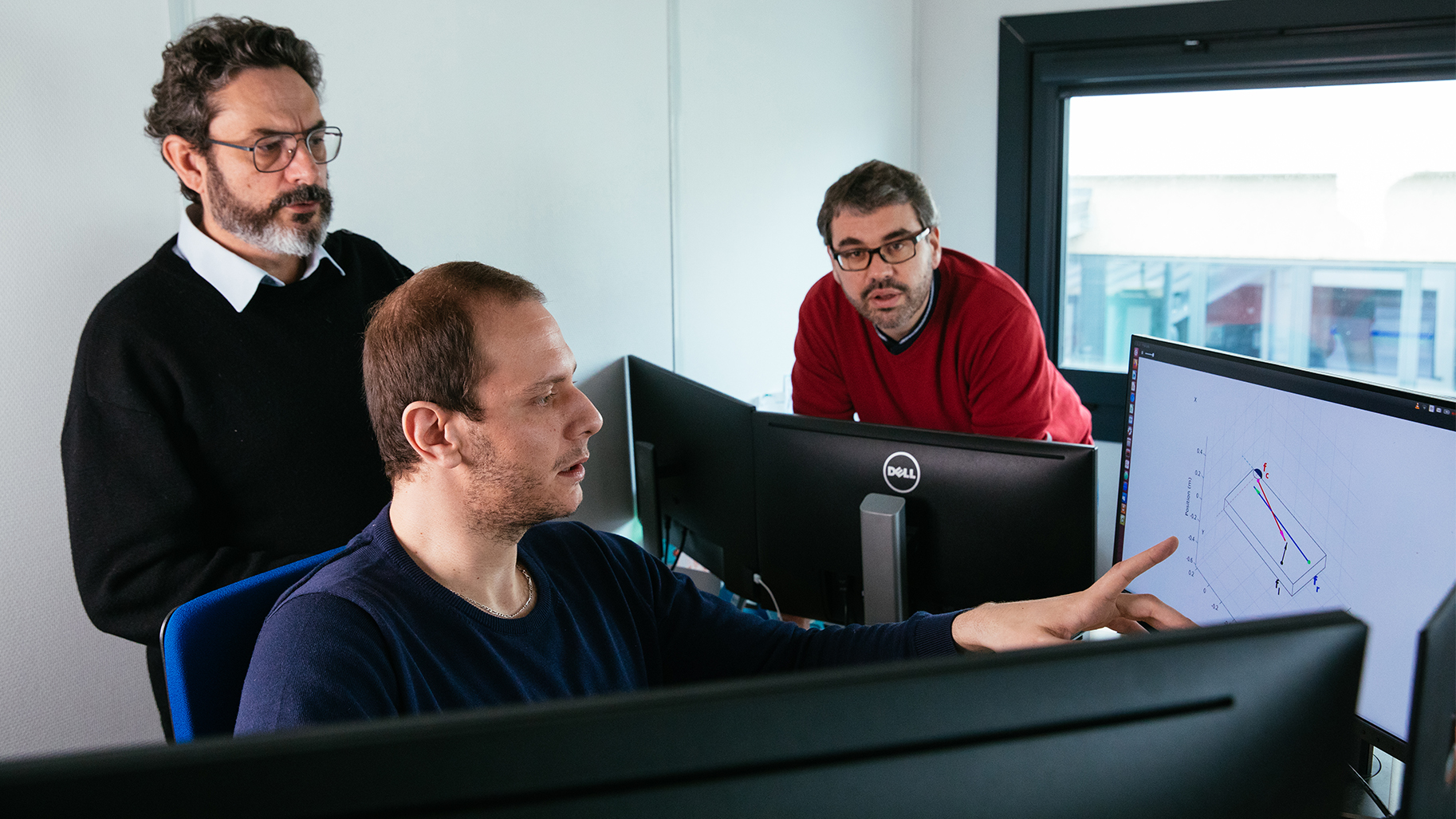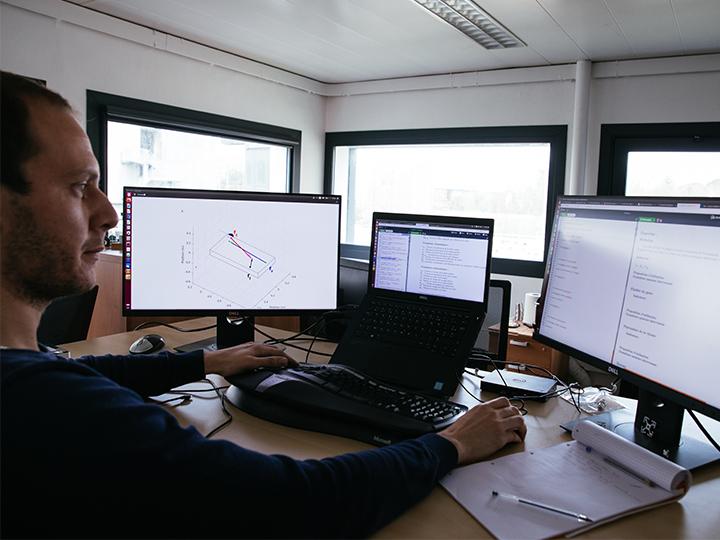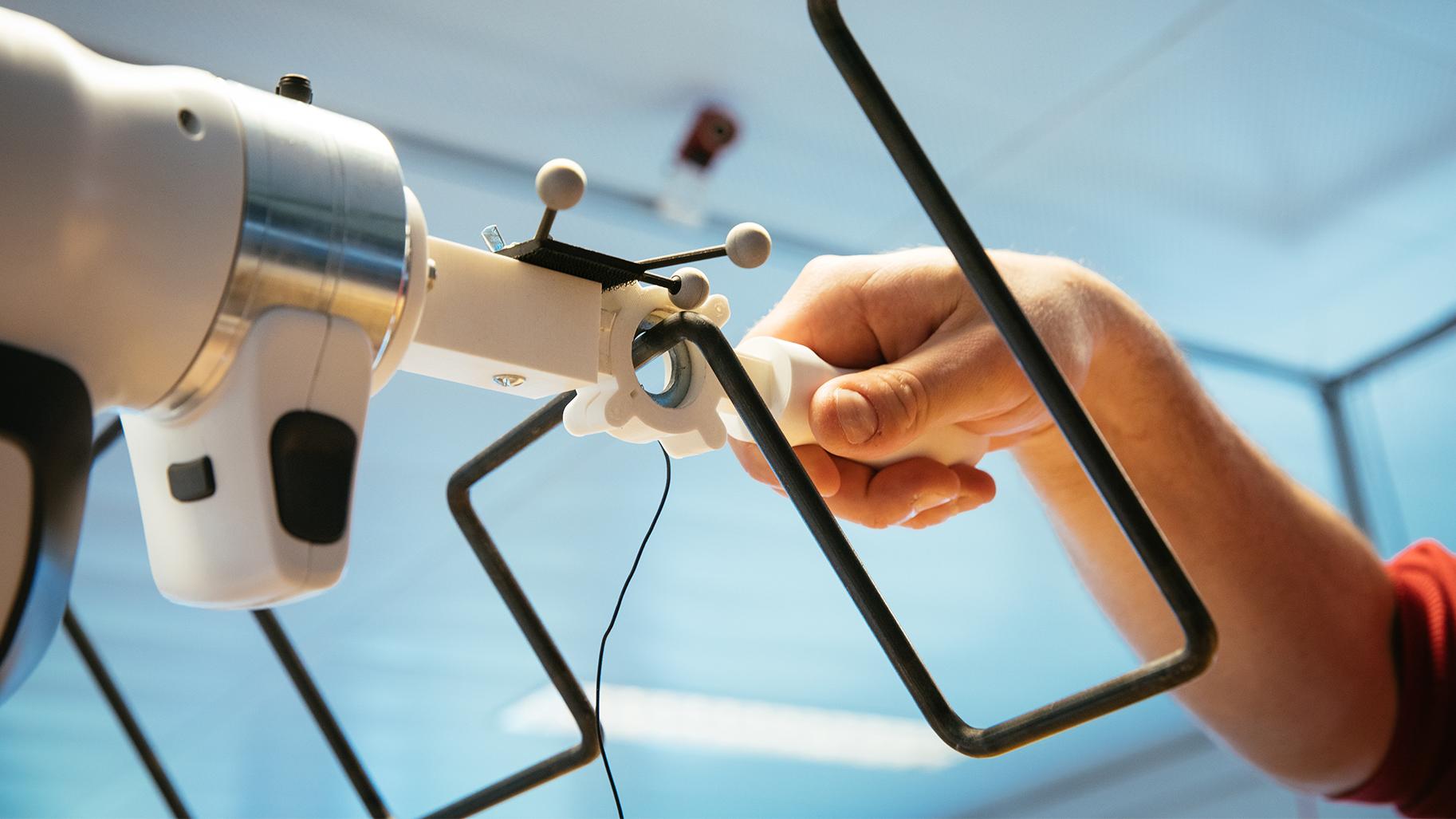
It’s not only manufacturers who are interested in cobotics. At the apprenticeship training centre for construction trades in Blanquefort, one of the biggest of its kind in France with 1,100 pupils, cobotics is attracting keen interest from both joinery teachers and management.
We decided with Auctus to look into how we could make spindle moulders safer to use”, explains Philippe Godin, assistant director of the apprenticeship training centre. “These tools are essential for joiners but they operate at 8,000 turns/minute and can throw parts out at speed if they encounter knots in the wood. Accidents occur frequently in the workplace and can lead to people needing their fingertips or even their whole fingers to be amputated.”
The apprenticeship training centre imposes strict safety measures. Apprentices are only allowed to use spindle moulders after months of experience in a workplace setting, under the watchful eye of a training provider. So, why cobotics? “We want to see if we might be able to make these machines safer while offering high-quality forms and finishes. In which case, companies in the sector would be able to get their hands on them relatively quickly.”
Three days of training in spindle moulding for the Inria PhD student
On the Inria side of things, the project is being run by a PhD student, Nassim Benhabib. In order to immerse himself in the subject, he went on a three-day training course in spindle moulding.
While there, I came to understand the subtle nature of interactions between the operator and the tool. Not only do operators use their eyes, but they must also use their sense of touch and even their sense of smell. Any cobot that is developed will need to respect and maintain this expertise.
However, there are many questions that will need to be answered first. How can this expertise be characterised or expressed in a mathematical form in order for it to be incorporated into the way in which machines are controlled? Will the cobot generate new risks if it gives pupils a false sense of security? How can the level of assistance be adjusted depending on the arduousness of the task and the ability of the apprentice?
Nassim Benhabib is also interested in the phenomenon of parts with knots being thrown out.
Cobots detect signs of them in 10 milliseconds, as opposed to 200 milliseconds for operators. They have the time to intervene in order to reduce the speed of expulsion.
Over the course of his PhD, Benhabib's aim is to devise a design and control methodology for cobotic assistance, something the apprenticeship training centre is keen to see happen. “We are proud to help the laboratory, and curious to see how cobotics may benefit us”, explains Philippe Godin. “If the results are conclusive, then we will share them with the national network of apprenticeship training centres.”

